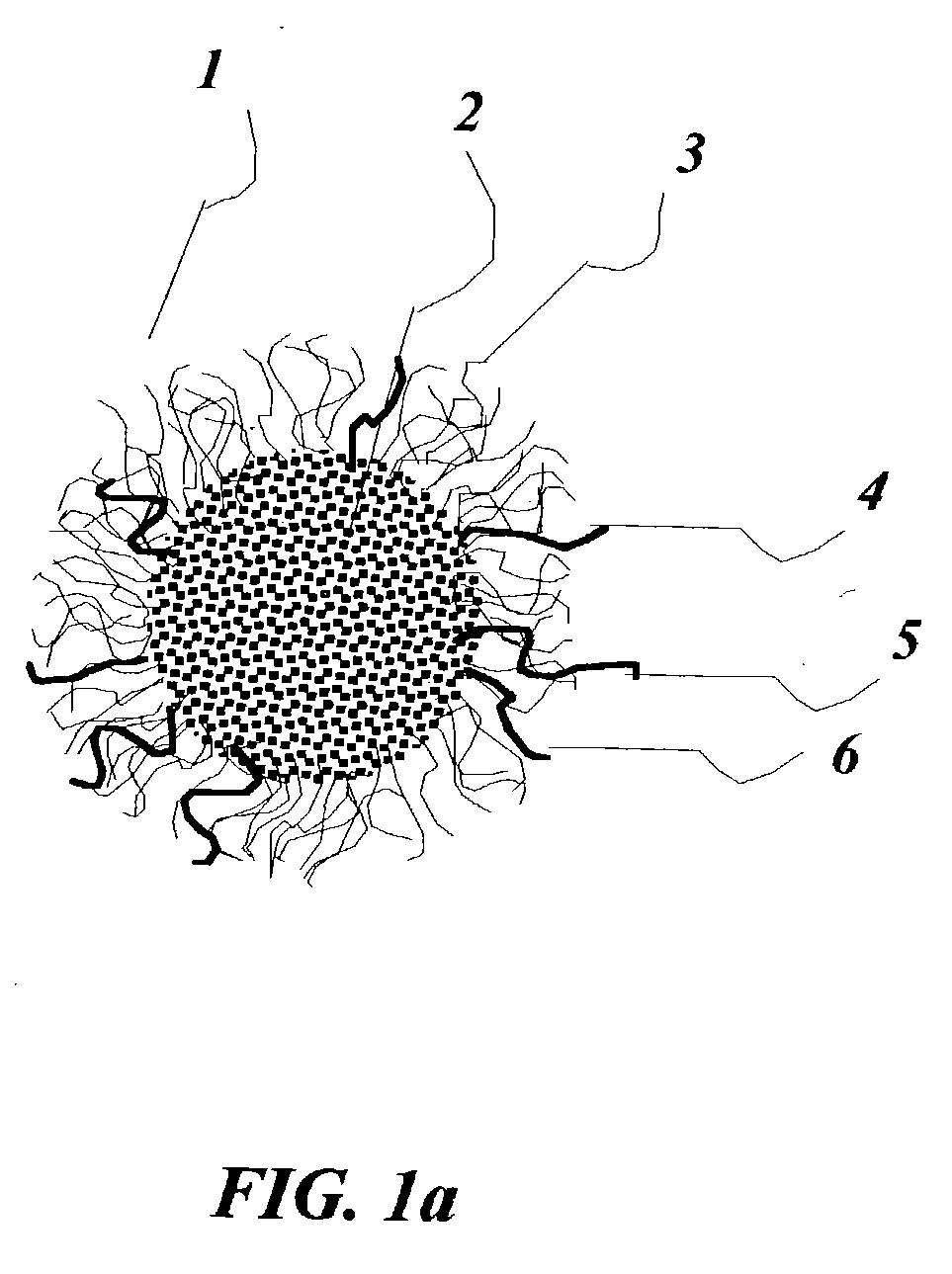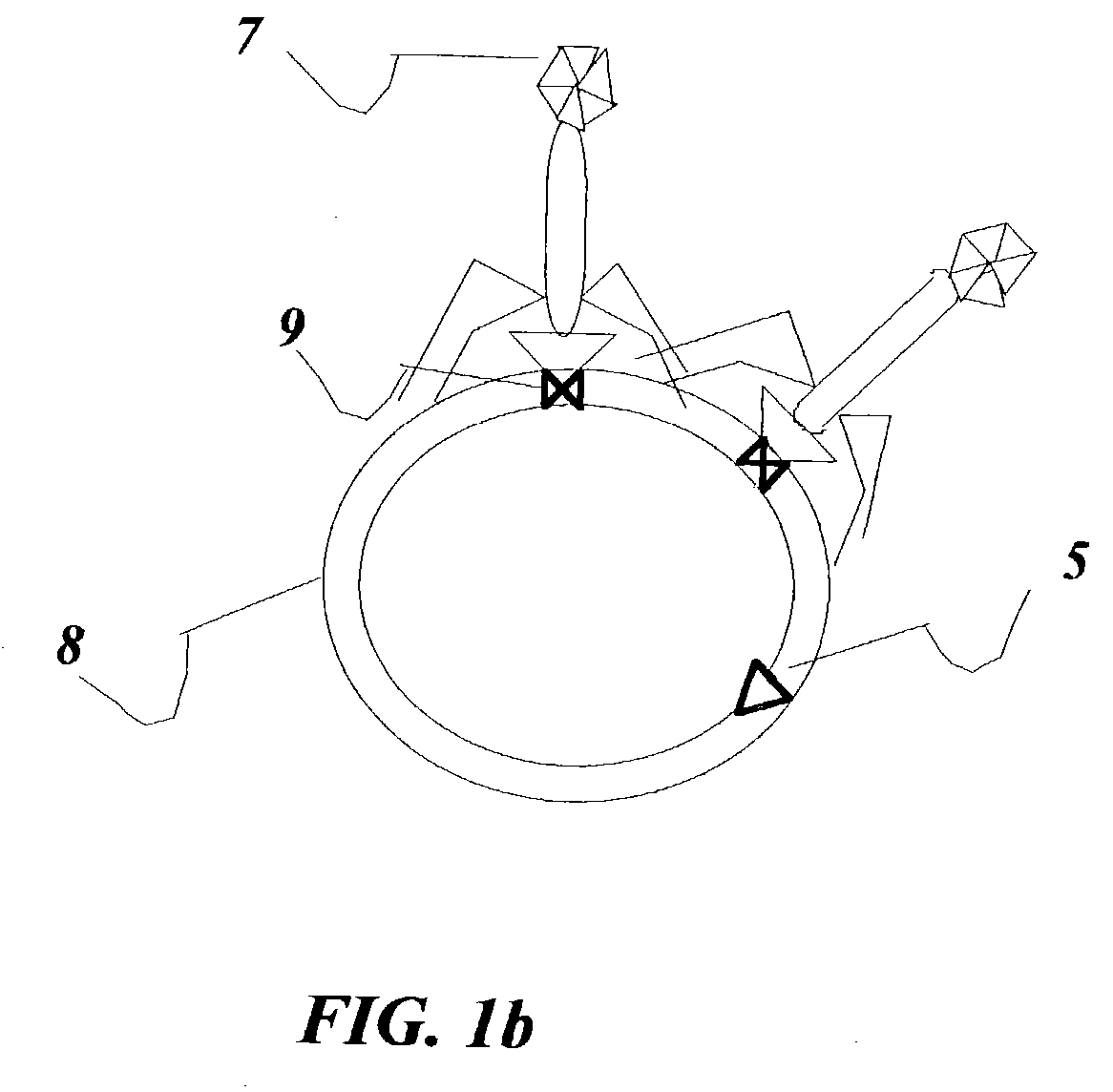Receptor mediated nanoscale copolymer assemblies for diagnostic imaging and therapeutic management of hyperlipidemia and infectious diseases
a technology of hyperlipidemia and nano-scale copolymer assembly, which is applied in the field of receptor-mediated nano-scale copolymer assembly for diagnostic imaging and therapeutic management of hyperlipidemia and infectious diseases, can solve the problems of fluidity of the aggregates of the polymersome, the fluidity of the fluid will drop, and the current imaging technique cannot be applied to image the circulating lipids for diagnostic purposes, so as to improve the bioavailability of drugs, prevent excessive extraction by the liver
- Summary
- Abstract
- Description
- Claims
- Application Information
AI Technical Summary
Benefits of technology
Problems solved by technology
Method used
Image
Examples
Embodiment Construction
[0061]FIG. 1a shows micelle 1 carrying hydrophobic drug molecule in its core or in some desirable cases a placebo 2 and a hydrophilic corona 3 with LDL receptor 4, and a peptide that induces fusion or lysis 5 of membrane vesicles or membrane tranduction protein 6. The '221 patent described in detail the synthesis of a nanoparticle similar to the micellel used for the present invention. An example of an LDL receptor 4 has been described in detail by the '654 patent including the encoding nucleic acid. Peptides that induce fusion or lysis 5 of membrane vesicles has been described by Wagner E in Advanced Drug Delivery Review 1999, volume 38, page 279, or transduction domain peptides 6 as described by Jensen K D, Nori A, Tijerina M, Kopeckova P, Kopecek J, in Journal of Controlled Release, 2003, volume 87 page 89. The procedure is familiar to anyone skilled in the art. Each peptide could be made to be tissue specific such that tissues where LDL reduction is desirable have corresponding ...
PUM
 Login to View More
Login to View More Abstract
Description
Claims
Application Information
 Login to View More
Login to View More - R&D
- Intellectual Property
- Life Sciences
- Materials
- Tech Scout
- Unparalleled Data Quality
- Higher Quality Content
- 60% Fewer Hallucinations
Browse by: Latest US Patents, China's latest patents, Technical Efficacy Thesaurus, Application Domain, Technology Topic, Popular Technical Reports.
© 2025 PatSnap. All rights reserved.Legal|Privacy policy|Modern Slavery Act Transparency Statement|Sitemap|About US| Contact US: help@patsnap.com



